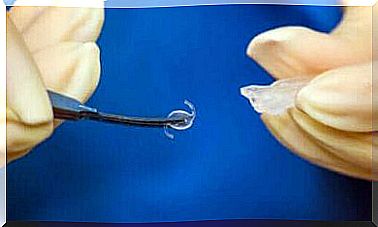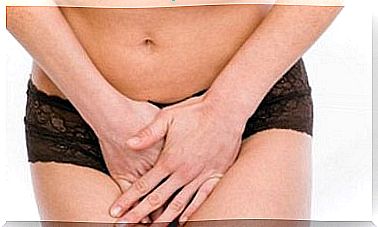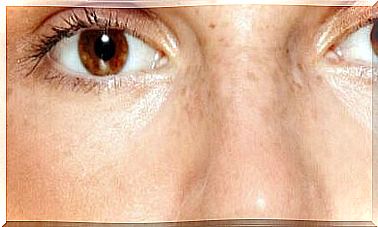Lotus Childbirth: Features, Risks And Benefits
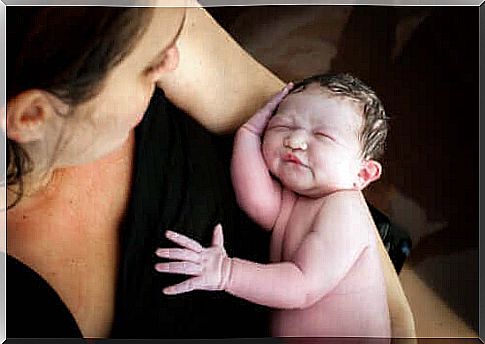
Many women feel that modern childbirth no longer provides an emotional and spiritual sense of empowerment. As a result, more and more women are exploring other options, including lotus childbirth. However, it is important to remember that what transformed childbirth into a highly medical and controlled hospitalization was an effort to reduce maternal and infant mortality and morbidity.
Adequate care for mothers and babies is one of the goals of the World Health Organization. The application of medical-based health interventions in childbirth is estimated to have greatly reduced the risk of maternal death: from one death per 73 women to one per 180 women.
Prospective parents must therefore be given sufficient information about childbirth and its risks so that they can choose the most appropriate way for them to have a child. One of these non-medical methods is called lotus childbirth.
What is lotus childbirth?
Lotus childbirth or birth is based on allowing the umbilical cord and placenta to remain attached to the baby until it detaches on its own. This usually occurs between 3 and 10 days after birth.
The placenta requires washing to remove any blood left over from childbirth, and is usually wrapped in an absorbent material such as a diaper. Finally, the placenta is massaged with salt and aromatic herbs to maintain moisture and combat unpleasant odors.
The origin of this practice
Lotus childbirth is named after Clair Lotus Day, who in 1974 discovered that the placenta of newborn chimpanzees comes off naturally. This raised questions about how we humans treat the placenta during childbirth.
Purpose of umbilical cord and placenta
Pregnancy cannot happen without a placenta; it prevents the mother’s immune system from attacking the baby because otherwise the mother’s body would experience developing as an external threat to the baby.
In addition, oxygen and all the nutrients the baby needs for its own development come from the mother through the placenta and umbilical cord. As a result, the baby’s own lungs begin to function and carry oxygen into the bloodstream immediately after birth.
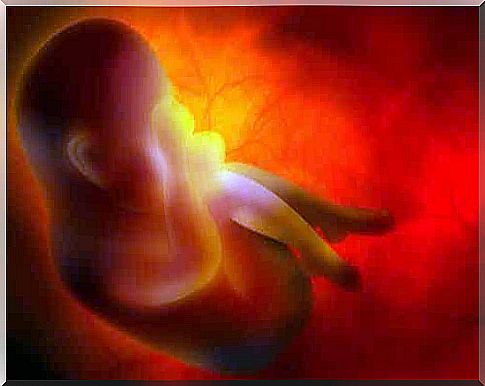
The benefits of Lotus childbirth
One of the benefits of lotus delivery is to prevent the baby from getting anemia because the blood flow from the placenta is not interrupted. In addition, it is assumed that there is no risk of infection because the umbilical cord is still closed.
However, it is important to remember that these are just hypotheses because there is no scientific evidence to support them.
Why do some families choose lotus childbirth?
However, the most common reason why parents choose to have a lotus birth is none of the above. Many parents see lotus birth as an option that gives more spiritual meaning to the moment of birth.
From the perspective of Lotus birth, the placenta is a sacred organ, the source of life and fertility. It forms an unbroken bond between mother and child. Lotus childbirth confirms the spiritual right of the mother and the newborn to choose the conditions of birth.
The effect of Lotus birth on the baby
For Lotus birth, the umbilical cord and placenta form a unit with the newborn, and the newborn has the right to choose at what stage he or she is ready to resign from this unit.
Some believe that leaving the placenta and umbilical cord attached to the newborn baby will prevent the baby from experiencing the trauma of separation. From the perspective of Lotus birth, such trauma is due to a sudden separation between the mother and the organ that protected the baby during pregnancy. Similarly, parents report spending more time with their babies because they have difficulty moving the baby and placenta.
Lotus childbirth: risks
At this point, you may be wondering why lotus birth is not commonly used if it is such a good method. As mentioned above, there is no scientific evidence that this is a safe and useful practice.
In fact, lotus childbirth is classified as a risky practice and is not recommended by most professionals. As long as there is no solid evidence and there have been reports of cases where lotus birth has endangered a newborn baby, it is not ethically correct to recommend it.
According to Lotus birth theory, a baby has a lower risk of infection because the umbilical cord is not severed prematurely. Thus, no gates have been opened for bacteria and other pathogens that could cause inflammation. The truth, however, is that a degradable placenta can become a source of bacteria. Previously, omphalitis (umbilical cord infection) and sepsis (sepsis) have been reported in newborns.
In addition, uncontrolled and constant blood flow from the placenta can lead to jaundice (yellowing of the eyes and skin), polycythemia (too many red blood cells, which increases blood viscosity) and thrombosis.
Lotus childbirth: recommendations
Keep the following in mind when considering childbirth options:
- Find information from reliable sources and discuss this with a trusted doctor.
- The method of childbirth (Alterial or cesarean section) depends on your health, the development of your pregnancy and the well-being of your baby. The method of childbirth is easier to decide once the pregnancy management has been effective and you have done all the necessary tests.
- Do not give birth to a baby at home unless you have a low-risk pregnancy. Home birth can be an option as long as there is no evidence that the mother or baby is in danger.
- Easy access to the hospital is key. The operation of the health care network is not the same in all countries. Thus, up to 40% of low-risk pregnancies can become more difficult during childbirth.
- Doctors recommend that you prepare for childbirth. You can create a childbirth plan in which you record your own wishes regarding childbirth. This plan is given to midwives as soon as you go to the hospital. A variety of childbirth coaching is also available.
Active delivery control
Postpartum hemorrhage remains one of the most common causes of maternal death. Active labor management or control of the third stage of labor are important tools to prevent this complication.
Active childbirth management refers to three practices:
- The primary intervention is to use an oxytonin-like drug to promote uterine contractions, according to the World Health Organization.
- Controlled umbilical cord pulling.
- Uterine massage.
The WHO also recommends delaying umbilical cord compression. The aim is that the blood flow in the umbilical cord should not be cut off immediately after the baby is born, nor should the umbilical cord be cut off immediately. It is recommended to wait a few minutes before disconnecting the umbilical cord.
Exceptions are newborns who have difficulty breathing. Delayed umbilical cord rupture prevents anemia and other serious diseases.
Treatment that respects the individual
The recommendations of the International Pregnancy and Childbirth Organizations are intended to treat the mother with dignity and respect. They also protect his privacy, confidentiality and integrity.
The aim is not only to prevent mothers from falling ill or dying, but also to empower women and defend their rights. This process begins before pregnancy and continues after the baby is born.
Human childbirth
Skin contact is paramount during the first hour to facilitate breastfeeding after birth. Mainly when the mother is well and the baby is born without complications.
The caring midwife places her newborn next to her mother, dries her, and assesses her breathing. He then waits a few minutes before attaching the lead. The baby is then covered with a dry blanket.
The nursing staff does all the routine procedures related to the treatment, but before that, they try to give the baby time to be on the mother’s skin, allowing the baby to be in close contact with her mother.

Lotus childbirth: is it worth it?
Despite the fact that there is no scientific evidence to support lotus childbirth, one cannot ignore the fact that parents who have experienced it see it as a positive experience that they want to replicate.
This is due in part to the fact that our human feelings, beliefs, thoughts, feelings, and spirituality are an integral part of our lives. Medical knowledge, on the other hand, often focuses on biological and physical, not forgetting other needs.
Parents need to examine the level and characteristics of the care provided in preparation for childbirth. Lotus childbirth is not usually recommended, but many hospitals offer other friendly, humane, and spiritual options.




